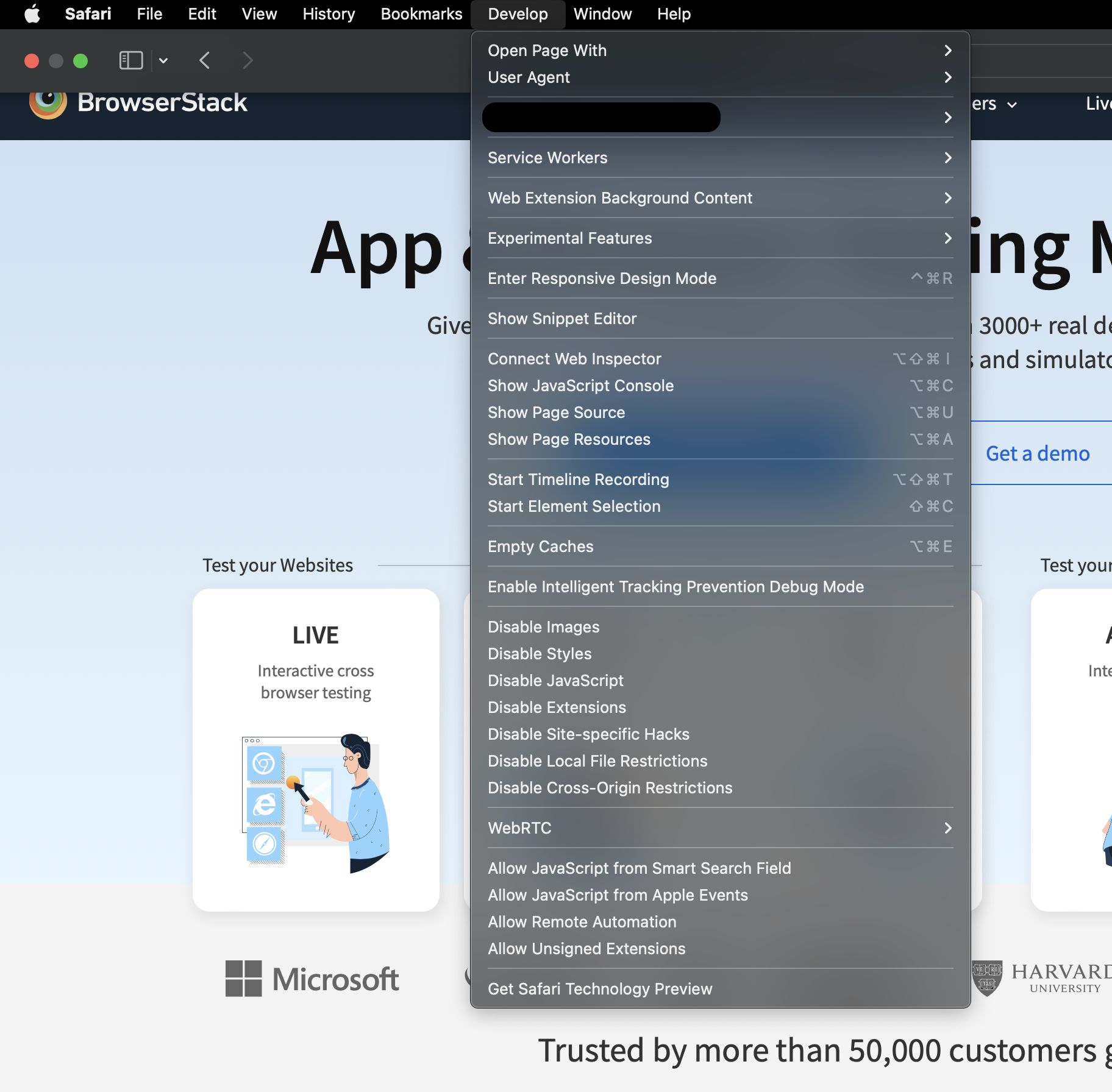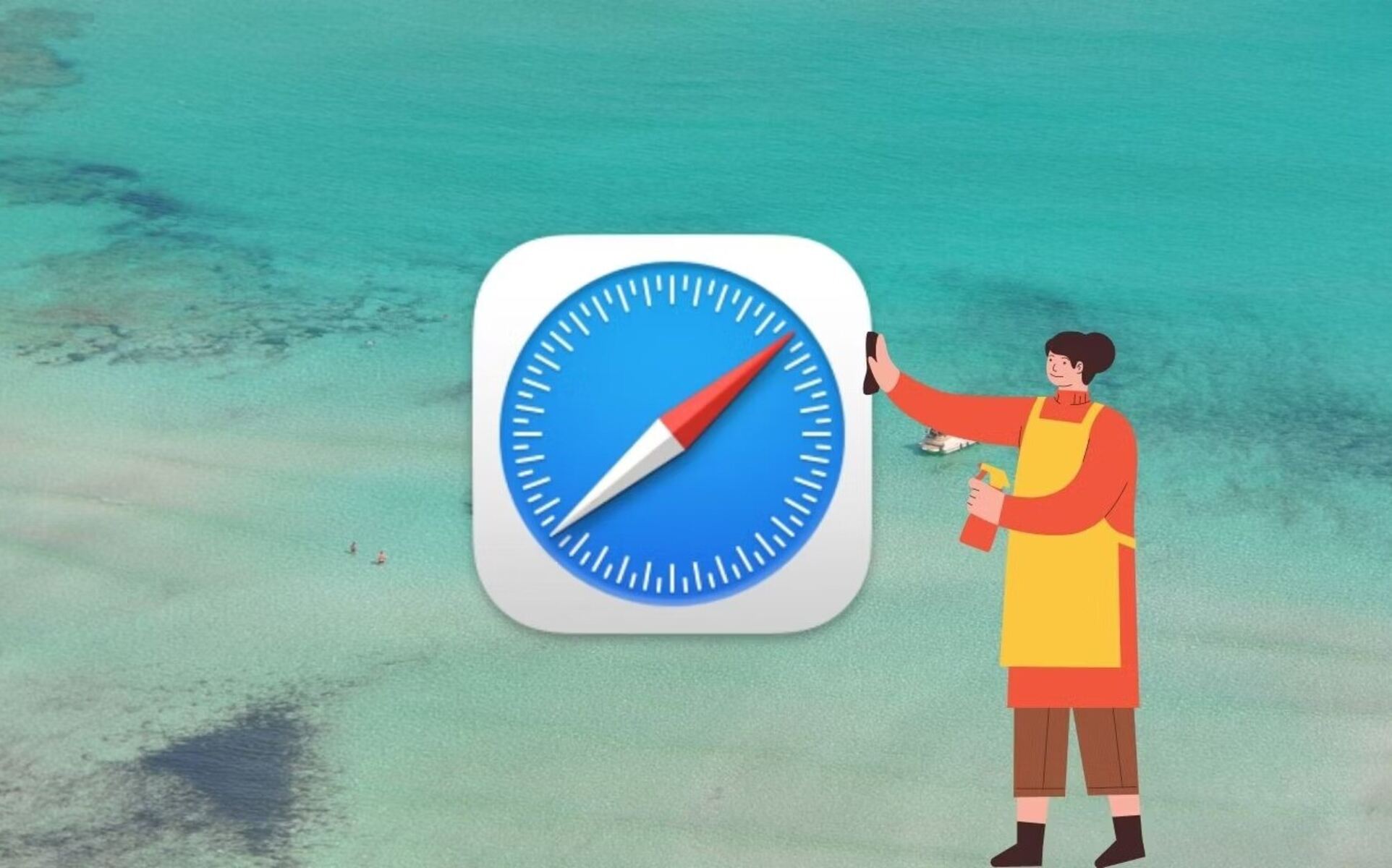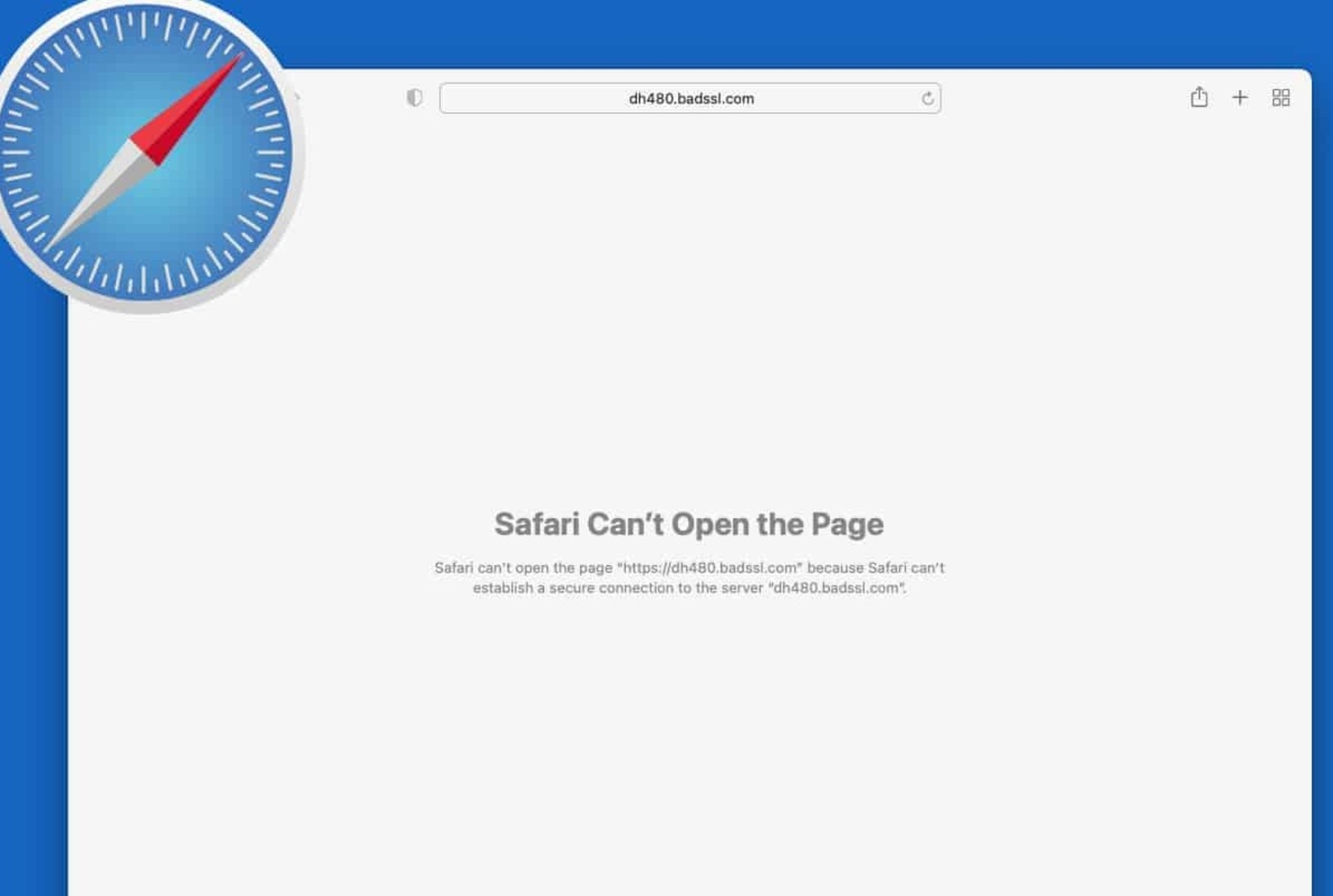Introduction
Safari is a powerful and versatile web browser that offers a seamless and intuitive browsing experience for Apple users. Whether you're using Safari on your Mac, iPhone, or iPad, it's essential to keep the browser running smoothly by periodically refreshing it. Refreshing Safari involves clearing history and website data, clearing cache and cookies, disabling extensions, and ensuring that the browser is up to date with the latest version.
In this article, we'll explore the various methods to refresh Safari, ensuring that you can optimize its performance and address any issues that may be hindering your browsing experience. By following these steps, you can maintain a clean and efficient browsing environment, allowing you to make the most of Safari's features and capabilities.
Let's dive into the details of each method, providing you with a comprehensive guide to refreshing Safari and keeping it running at its best. Whether you're troubleshooting browsing issues or simply looking to optimize your browsing experience, these steps will help you achieve a smoother and more efficient Safari experience.
Clearing History and Website Data
Clearing your browsing history and website data in Safari can help improve its performance and protect your privacy. When you visit websites, Safari stores information such as the sites you've visited, your search history, and data from forms you've filled out. While this data can be useful for quick access to your favorite sites, it can also accumulate over time and potentially slow down your browsing experience. Additionally, clearing this data can enhance your privacy by removing traces of your online activity.
To clear your browsing history and website data in Safari on a Mac, follow these steps:
-
Open Safari: Launch the Safari browser on your Mac.
-
Access History: In the top menu bar, click on "History" and select "Clear History" from the dropdown menu.
-
Choose Time Range: A window will appear, allowing you to choose the time range for which you want to clear your history. You can select "all history" to remove all browsing history or choose a specific time frame.
-
Clear History: After selecting the desired time range, click on "Clear History" to confirm and clear your browsing history.
To clear website data, which includes cookies and cached files, follow these steps:
-
Access Preferences: In the top menu bar, click on "Safari" and select "Preferences."
-
Navigate to Privacy: In the Preferences window, go to the "Privacy" tab.
-
Manage Website Data: Click on "Manage Website Data" to view the stored website data.
-
Remove Data: You can remove individual website data by selecting it and clicking "Remove," or you can choose "Remove All" to clear all website data.
By regularly clearing your browsing history and website data, you can ensure that Safari operates efficiently and maintains your privacy. This process can also resolve certain browsing issues, such as slow loading times or website errors, by removing outdated or corrupted data. Incorporating this practice into your routine can contribute to a smoother and more secure browsing experience with Safari.
Clearing Cache and Cookies
Clearing the cache and cookies in Safari is an essential step in refreshing the browser and optimizing its performance. The cache consists of temporary files stored on your device, allowing websites to load faster upon subsequent visits by accessing locally stored data. While this can enhance browsing speed, an accumulation of cached data over time may lead to issues such as slow loading times or outdated content display. Similarly, cookies, which are small pieces of data stored by websites on your device, can impact your browsing experience if they become outdated or corrupted.
To clear the cache and cookies in Safari on a Mac, follow these steps:
-
Open Safari Preferences: Launch Safari and click on "Safari" in the top menu bar. Then, select "Preferences."
-
Access Privacy Settings: In the Preferences window, navigate to the "Privacy" tab.
-
Manage Website Data: Click on "Manage Website Data" to view the stored website data, including cookies and cached files.
-
Remove Cache and Cookies: You can remove individual cache and cookie data by selecting specific items and clicking "Remove." Alternatively, you can choose "Remove All" to clear the entire cache and all cookies stored by websites.
By clearing the cache and cookies, you can ensure that Safari operates efficiently and delivers an up-to-date browsing experience. This process can resolve issues related to outdated content, privacy concerns, and website errors caused by corrupted data. Additionally, clearing the cache and cookies can contribute to a smoother browsing experience, especially when encountering issues such as slow loading times or unresponsive websites.
In summary, regularly clearing the cache and cookies in Safari is a proactive measure to maintain the browser's performance and ensure a secure and seamless browsing experience. By incorporating this practice into your routine, you can optimize Safari's functionality and address potential issues related to cached data and cookies, ultimately enhancing your overall browsing experience.
Disabling Extensions
Safari extensions are powerful tools that can enhance your browsing experience by adding functionality and customization options to the browser. However, there are instances where certain extensions may conflict with Safari's performance or cause unexpected behavior, leading to browsing issues such as slow loading times, unresponsive tabs, or frequent crashes. In such cases, disabling extensions can be a practical approach to troubleshooting and refreshing Safari.
To disable extensions in Safari on a Mac, follow these steps:
-
Open Safari Preferences: Launch Safari and click on "Safari" in the top menu bar. Then, select "Preferences."
-
Access Extensions: In the Preferences window, navigate to the "Extensions" tab. Here, you will see a list of installed extensions along with their respective functionalities.
-
Disable Extensions: To disable an extension, simply uncheck the box next to its name. This action effectively turns off the extension, preventing it from running while you browse the web.
By disabling extensions, you can isolate potential sources of browsing issues and assess their impact on Safari's performance. This process allows you to identify problematic extensions that may be causing conflicts or hindering the browser's functionality. Additionally, disabling extensions can serve as a temporary measure to troubleshoot specific browsing issues, providing insights into the impact of individual extensions on Safari's behavior.
Once you have disabled extensions, you can gradually re-enable them one by one, observing how each extension affects Safari's performance. This systematic approach enables you to pinpoint the extension(s) responsible for any adverse effects on browsing, empowering you to make informed decisions about which extensions to keep or remove.
In summary, disabling extensions in Safari is a valuable troubleshooting step that can contribute to refreshing the browser and addressing potential performance issues. By carefully managing and evaluating the impact of extensions, you can optimize Safari's functionality and ensure a smoother browsing experience. Whether you encounter browsing issues or simply seek to streamline Safari's performance, the ability to disable and assess extensions provides a practical means of maintaining a reliable and efficient browsing environment.
Updating Safari
Keeping Safari up to date is crucial for maintaining its performance, security, and compatibility with the latest web technologies. Apple regularly releases updates for Safari, addressing potential vulnerabilities, introducing new features, and enhancing overall browsing experience. By ensuring that you have the latest version of Safari installed, you can benefit from improved speed, stability, and security while accessing websites and web applications.
To update Safari on a Mac, follow these steps:
-
Check for Updates: Open the App Store on your Mac and click on the "Updates" tab. If a Safari update is available, it will be listed here along with other available updates for your system.
-
Update Safari: If a Safari update is included in the available updates, click on the "Update" button next to Safari to initiate the installation process. Ensure that your Mac is connected to the internet to download the update.
-
Restart Safari: Once the update is installed, restart Safari to apply the changes. You can verify the updated version of Safari by clicking on "Safari" in the top menu bar and selecting "About Safari."
By regularly updating Safari, you can benefit from improved performance, security patches, and compatibility with the latest web standards. Updated versions of Safari often include optimizations that enhance browsing speed, reduce memory usage, and improve energy efficiency, contributing to a smoother and more responsive browsing experience.
In addition to performance enhancements, Safari updates frequently address security vulnerabilities, protecting users from potential threats such as malware, phishing attempts, and other security risks. By staying current with Safari updates, you can mitigate security concerns and ensure a safer browsing environment for your online activities.
Furthermore, updated versions of Safari often introduce new features and functionalities that expand the capabilities of the browser. These may include improved privacy controls, enhanced tab management, and support for emerging web technologies, allowing users to take advantage of the latest advancements in web browsing.
In summary, updating Safari is a fundamental practice that contributes to maintaining the browser's performance, security, and compatibility with evolving web standards. By staying current with Safari updates, users can enjoy a more efficient, secure, and feature-rich browsing experience, ensuring that Safari remains a reliable and versatile platform for accessing the web.
Conclusion
In conclusion, refreshing Safari is a proactive and essential practice for optimizing the browser's performance, ensuring privacy, and addressing potential browsing issues. By clearing history and website data, users can maintain a clean browsing environment, improve privacy, and resolve issues related to outdated or corrupted browsing data. Additionally, clearing the cache and cookies contributes to a smoother browsing experience by addressing issues such as slow loading times and outdated content display.
Disabling extensions provides a valuable troubleshooting approach, allowing users to identify and manage potentially problematic extensions that may impact Safari's performance. This step empowers users to streamline their browsing experience and maintain a reliable and efficient environment for accessing the web.
Furthermore, updating Safari is crucial for benefiting from improved performance, security enhancements, and compatibility with the latest web technologies. By staying current with Safari updates, users can ensure a safer and more feature-rich browsing experience, while also mitigating potential security risks.
Incorporating these practices into your routine not only contributes to a more efficient and secure browsing experience but also allows you to make the most of Safari's capabilities. Whether you're using Safari on a Mac, iPhone, or iPad, refreshing the browser using these methods can help you maintain a reliable and versatile platform for accessing the web.
By following the comprehensive guide to refreshing Safari outlined in this article, users can proactively address potential browsing issues, enhance privacy, and ensure that Safari operates at its best. Whether you're troubleshooting specific problems or simply seeking to optimize your browsing experience, these steps provide a practical and effective approach to refreshing Safari and maintaining a seamless and efficient browsing environment.

























